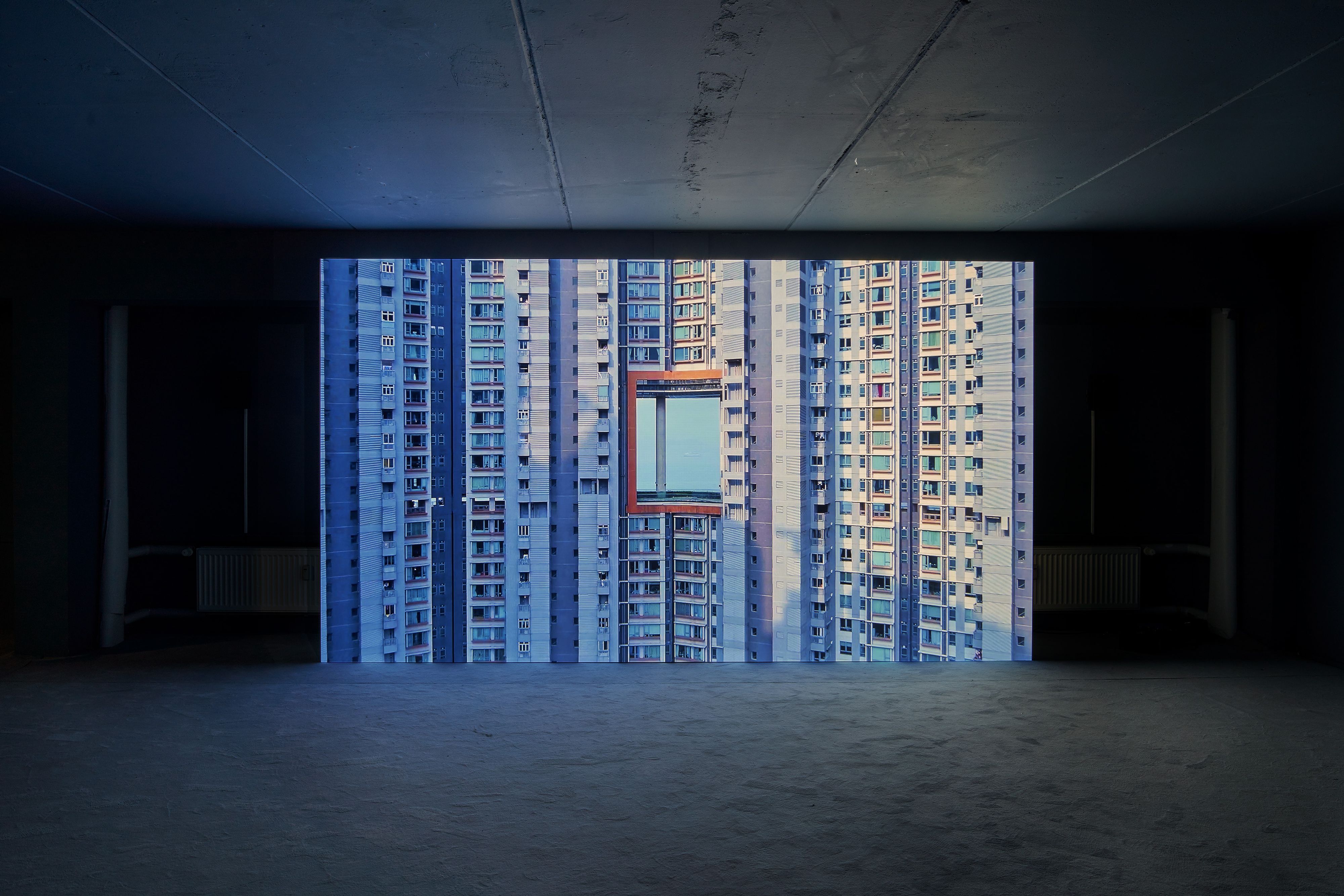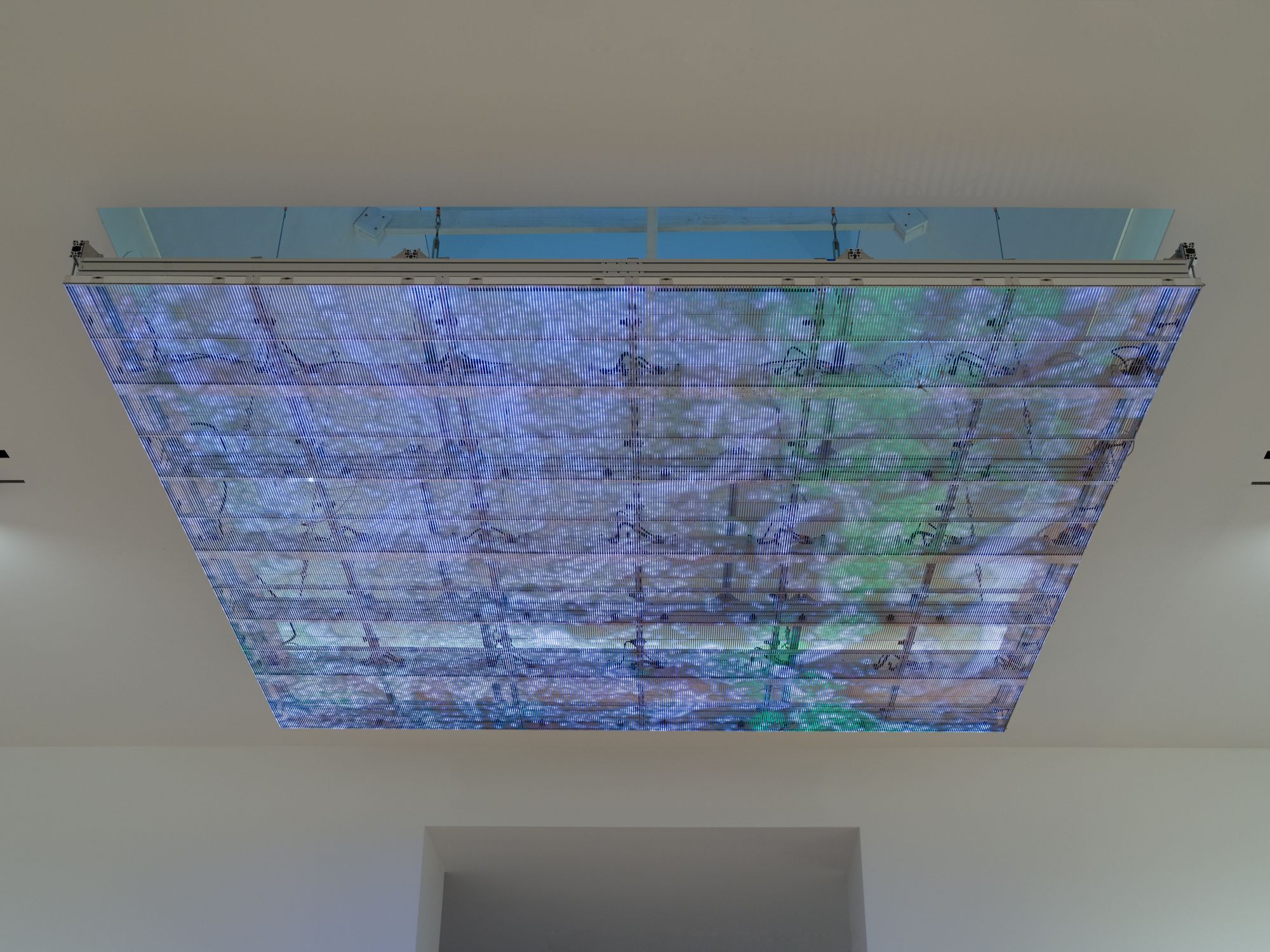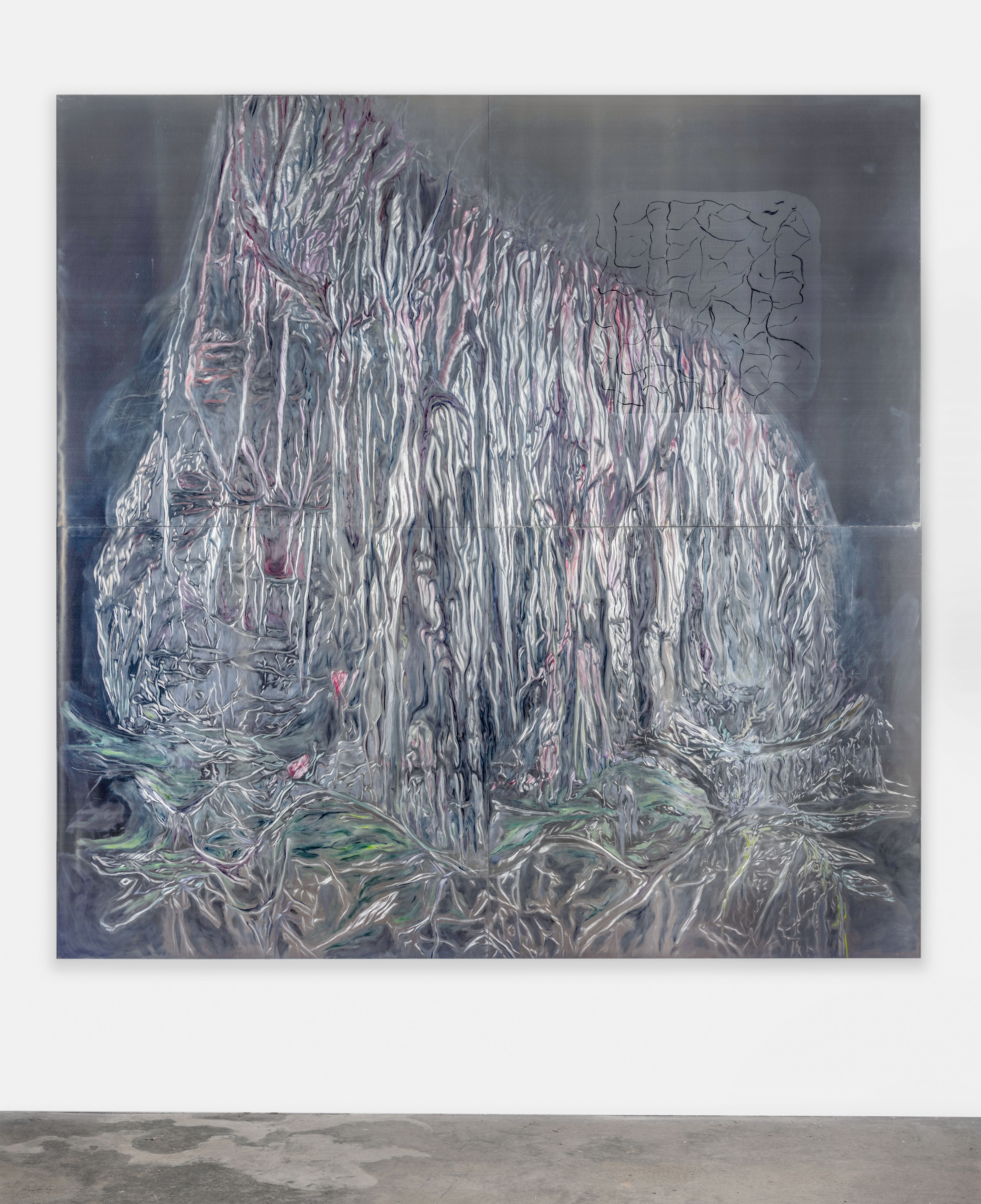
WangShui photographed by Sam Clarke for PIN–UP

Photographed by Sam Clarke for PIN–UP
Contemporary media is synesthetic, cosmological, and hard to parse, and there is a general cultural dissatisfaction with both its production and the way it is consumed. Artist WangShui builds and performs their own version of our technological surrogacy, and in doing so critiques the consumption of contemporary media. Their elaborate installations integrate queer youth culture, science-fiction and its animisms, corporate architectures, planetary dimensionality, and A.I. dysmorphia, creating sparkling techno-sensorial experiences that oscillate between screening and sculpture. PIN–UP spoke with the artist at their studio in Hudson, New York, just as they were finishing their new body of work, which is on view at the 2022 Whitney Biennial.

Installation shot of From Its Mouth Came a River of High-End Residential Appliances (2018) as part of group show Holy Mosses at Hong Kong’s Blindspot Gallery, 2019. Photo courtesy of the artist.
Elizaveta Shneyderman: I saw your performance of From Its Mouth Came a River of High-End Residential Appliances at EMPAC in Troy, New York, a few years ago. It felt like a mash-up of the techno-metropolitan apparatus with body dysmorphia. What’s the mediation between body and screen in your practice?
WangShui: I’ve always had a thing for digestion — tracking metabolic image loops and the desire to witness oneself being devoured and transmuted. I use screens as windows or portals into the meta-gut, which makes my practice a sort of techno-mukbang.
ES: Is it a mukbang in the sense that viewers of the work can vicariously satisfy their desire for technology?
W: Yes. For example, the proliferation of live streaming to me is about a subconscious desire to dematerialize into data. I haven’t fully figured it out yet, but I suspect it has to do with quantum gravity. Social media economies have obviously really tapped into and incentivized this adrenaline rush.

WangShui photographed by Sam Clarke for PIN–UP

WangShui photographed by Sam Clarke for PIN–UP
ES: Your work seeks simultaneously to capture and subvert extant architectures. In other words, architecture is a tool for you. What are your feelings about it?
W: Architecture is a framing device in my work both in terms of site and proxy. In my undergrad studies I was obsessed with urban theories like Henri Lefebvre’s production of space. This later led me to Eisenstein’s notion of architecture as pre-cinematic montage and the evolution of literal windows into digital screens.
ES: I’m reminded of Eisenstein’s suggestion that the cinematic experience consists of smaller parts — “molecules” of impressions — and that any aggressive shift within these units can have an emotional impact on an audience. How does space’s capacity to inform ideology sit with you?
W: I've been really enjoying theoretical physicist Carlo Rovelli’s idea that spacetime doesn’t even exist as a thing but as a web of events. It’s a great way to think about film, or anything actually — an object, a building, or even a being. Even when you can’t see them, they are all in a profound state of change catalyzed by just looking at them.

WangShui’s Scr∴ pe II at the 2022 Whitney Biennial. Photo courtesy of the artist.
ES: There’s a haptic quality to your work. Do you think there is a comparison to be made here between non-human animacy, techno-determinism, and A.I.?
W: To me, techno-hapticity, like ASMR, is a form of sensory integration between humans and machines. It’s how touchscreens became intuitive. Most of my work now explicitly focuses on posthuman perception, which I think of as an almost structural integration between animal, environmental, human, and machine. I really believe we are in an important moment in history where the entire notion of the modern human is being melted down for parts and reconstituted. I only found words for it more recently, but my work has always in one way or another tried to document this transition towards post-human consciousness.

WangShui’s Scr∴pe. Photo courtesy of the artist.

WangShui’s Scr∴pe. Photo courtesy of the artist.
ES: Speaking of which, your project Scr∴pe was recently presented at the Hammer Museum in Los Angeles in a show titled No Humans Involved. What inspired that piece?
W: That work was the result of a really pivotal dialogue that spanned the first two years of the pandemic between the curator Erin Christovale and me about reconstituting being itself. It was also my foray into A.I. and machine learning, which connected so many dots for me. Cancer was on my mind, since it runs in the family, so I conceived Scr∴pe as an anamorphic post-human tissue sample excised from the latent space of a GAN [a generative adversarial network, which is a class of machine-learning frameworks]. It was inspired by the fleshy shape-shifting alien architecture in Octavia E. Butler’s Xenogenesis trilogy, which thrives on human tumors. The translucent screen was installed under a skylight at the museum, and there were sensors that interpolated the light emitted from the screen with the daylight from above and fed data back into the imagery. What really surprised me was how the GANs were able to generate moving images that I never felt more emotionally connected to in my life.

WangShui’s Hyaline Seed (Isle of Vitr∴ous), 2022, at the Whitney Biennial. Photo courtesy of the artist.
ES: You also started painting on aluminum honeycomb panels used for aircraft and for building façades. What was the process like and what are you focusing on currently?
W: Yes. At the Whitney Biennial I’m presenting new pieces from this same body of work, which explores neurodivergence. It will be the first time I’m bringing the paintings together with the A.I. LED works — an entanglement fantasy finally coming true. The paintings are a sort of light and metal work, where I sketch on the aluminum panels with soapstone, abrade them with wire brushes, and then smear paint across them like a polish. As in the work with the GANs, they are about revealing the latent space of the paint through light refraction. I’ve also begun co-authoring the content with A.I. programs by creating feedback loops of gestures, colors, and forms. The A.I. has been serving me alien landscapes recently, which has been such a funny read since I’ve been making them in the middle of a cow field. Eventually, towards the end of my “epoch,” I plan to gather all my aluminum paintings to build a mausoleum for the human species.